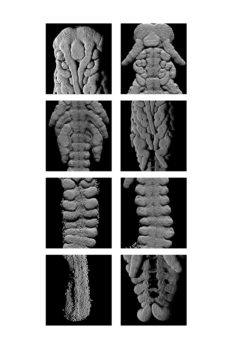Siobhan Roberts in The New York Times:
 Humans, frogs and many other widely studied animals start as a single cell that immediately divides again and again into separate cells. In crickets and most other insects, initially just the cell nucleus divides, forming many nuclei that travel throughout the shared cytoplasm and only later form cellular membranes of their own. In 2019, Stefano Di Talia, a quantitative developmental biologist at Duke University, studied the movement of the nuclei in the fruit fly and showed that they are carried along by pulsing flows in the cytoplasm — a bit like leaves traveling on the eddies of a slow-moving stream.
Humans, frogs and many other widely studied animals start as a single cell that immediately divides again and again into separate cells. In crickets and most other insects, initially just the cell nucleus divides, forming many nuclei that travel throughout the shared cytoplasm and only later form cellular membranes of their own. In 2019, Stefano Di Talia, a quantitative developmental biologist at Duke University, studied the movement of the nuclei in the fruit fly and showed that they are carried along by pulsing flows in the cytoplasm — a bit like leaves traveling on the eddies of a slow-moving stream.
But some other mechanism was at work in the cricket embryo. The researchers spent hours watching and analyzing the microscopic dance of nuclei: glowing nubs dividing and moving in a puzzling pattern, not altogether orderly, not quite random, at varying directions and speeds, neighboring nuclei more in sync than those farther away. The performance belied a choreography beyond mere physics or chemistry.
“The geometries that the nuclei come to assume are the result of their ability to sense and respond to the density of other nuclei near to them,” Dr. Extavour said. Dr. Di Talia was not involved in the new study but found it moving. “It’s a beautiful study of a beautiful system of great biological relevance,” he said.
More here.
